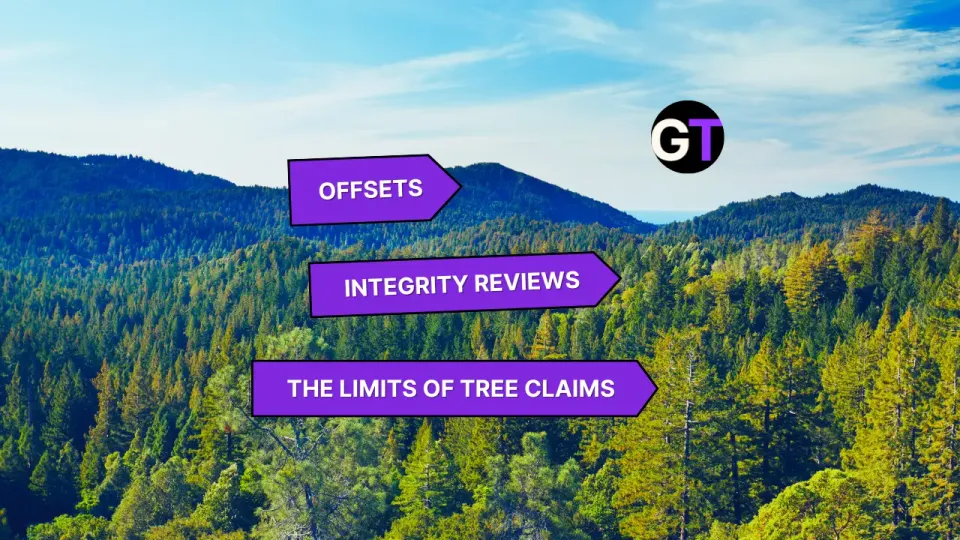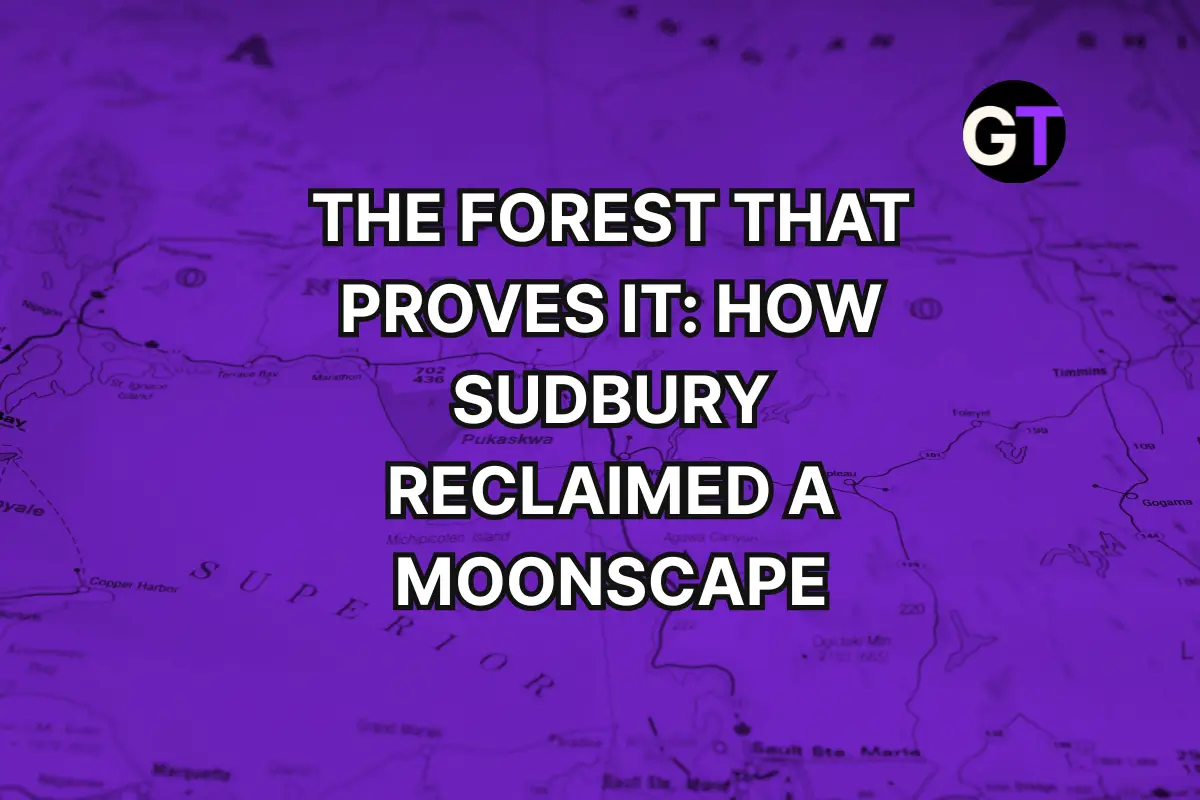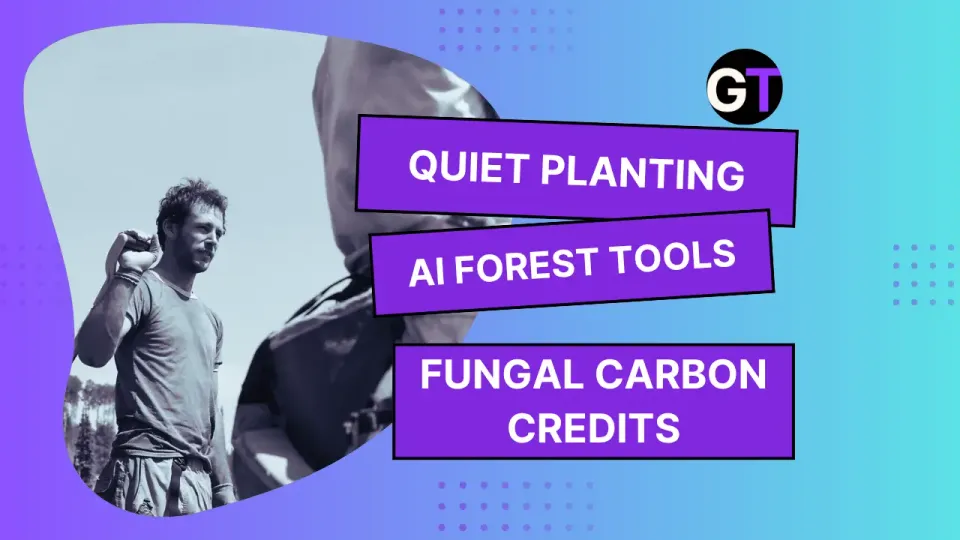Renoster’s Pivot, ForestScan’s Map and Tropical Trade-Offs
As Renoster launches Apollo and ForestScan sets new benchmarks, the path to credible carbon unfolds in this week's forest news.
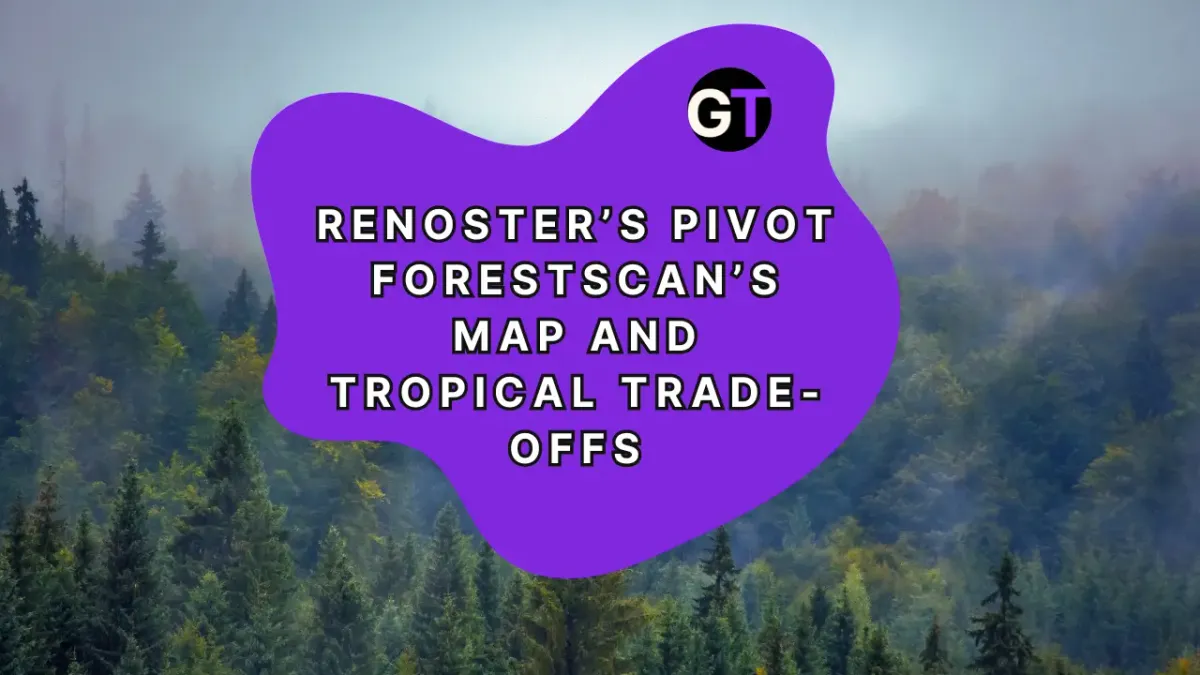
Renoster Pivots from Rater to Remover with Apollo
Carbon rating agency Renoster just pulled a power move—ditching the clipboard and stepping into the forest with Apollo, its new carbon removal program. After scrutinizing 500M+ credits via its Mercury platform, the company’s now flipping the script: it’s launching its own Improved Forest Management (IFM) projects, starting with 37 landowners and 20,000 acres in Maine. Apollo aims to democratize access for small landowners, bake transparency into every credit, and raise the bar with science-first rigor, LiDAR, AI, and insurance-backed durability.
💬 Can a former ratings agency successfully police the market and play in it—without tripping over its own credibility?
👉👉 Dive deeper at Renoster
Why Do Some Community Conservation Efforts Struggle to Scale?
A new study in Conservation Biology traces ten community-led conservation initiatives across four continents, revealing why scaling up remains so elusive. Despite local successes, many hit familiar walls: short-term grants, shifting donor priorities, and clunky institutional frameworks that don’t flex with local needs. The researchers offer more than hand-wringing—they sketch out what might need to change if we want community-driven models to grow without losing their grassroots character.
💬 Can diagnosing these obstacles help future community-based projects avoid the same fate—or are some limits built into the model?
👉👉 Read it in Conservation Biology
How Much Does Mapping Resolution Matter for Forest Monitoring?
A new study in Silva Fennica explores how different spatial resolutions—from 1 to 30 meters—affect the accuracy of forest attribute maps in Norway. Surprisingly, the best results didn’t always come from the finest detail: attributes like biomass, volume, and Lorey’s height performed just as well, or even better, at 5–10 m resolutions than at the native 16 m model scale. The takeaway? Finer isn’t always finer—especially when it comes to balancing resolution, bias, and operational feasibility.
💬 As remote sensing drives more forest-based climate decisions, are we ready to confront the trade-offs baked into our pixels?
👉👉 Read the open-access study in Silva Fennica
Bending the Climate Curve with Trees: Will the Timing Work?
A new paper in One Earth quantifies the potential of forest-based carbon removal to meet global net-zero targets. Modeling multiple pathways, the authors find that nature-based solutions—particularly forest restoration—could deliver up to 7.3 gigatonnes of CO₂ removals annually by mid-century. But even at full tilt, that number isn’t enough to meet Paris-aligned trajectories without rapid fossil fuel cuts. Timing is everything—and so is scale.
💬 Can natural carbon sinks ramp up fast enough to make a real dent—or are we asking forests to do too much, too late?
👉👉 Read more in One Earth
When "Nature-Positive" Turns Fuzzy: Biodiversity's Role in Carbon Market Debates
A new commentary in Nature Communications scrutinizes the rise of the term "nature-positive" in carbon offsetting discourse. While it promises win-wins for climate and biodiversity, the authors argue that the concept is often deployed without clear metrics, undermining accountability. They call for more rigorous integration of biodiversity into carbon market frameworks—before vague language becomes a shield for weak action.
💬 Can the push for biodiversity co-benefits bring real rigor to offset markets—or is “nature-positive” just the next buzzword?
👉👉 Read it in Nature Communications
Can Open Forest Maps Really Support the EUDR?
A new paper in Remote Sensing digs into whether open-source satellite maps are ready to back up the EU’s landmark deforestation law. Researchers benchmarked eight global forest monitoring systems against the EUDR’s demands—tracking where and how well they detect tree loss. The verdict? It’s a mixed canopy. Tools like MapBiomas and GFW lead the pack, but differences in spatial resolution, transparency, and even definitions of “forest” make enforcement tricky. A reminder that in climate policy, details matter—and not all pixels are created equal.
💬 If the EU’s crackdown on imported deforestation relies on satellite maps—how critical is it that those maps are open, accurate, and verifiable?
👉👉 Read it in Remote Sensing
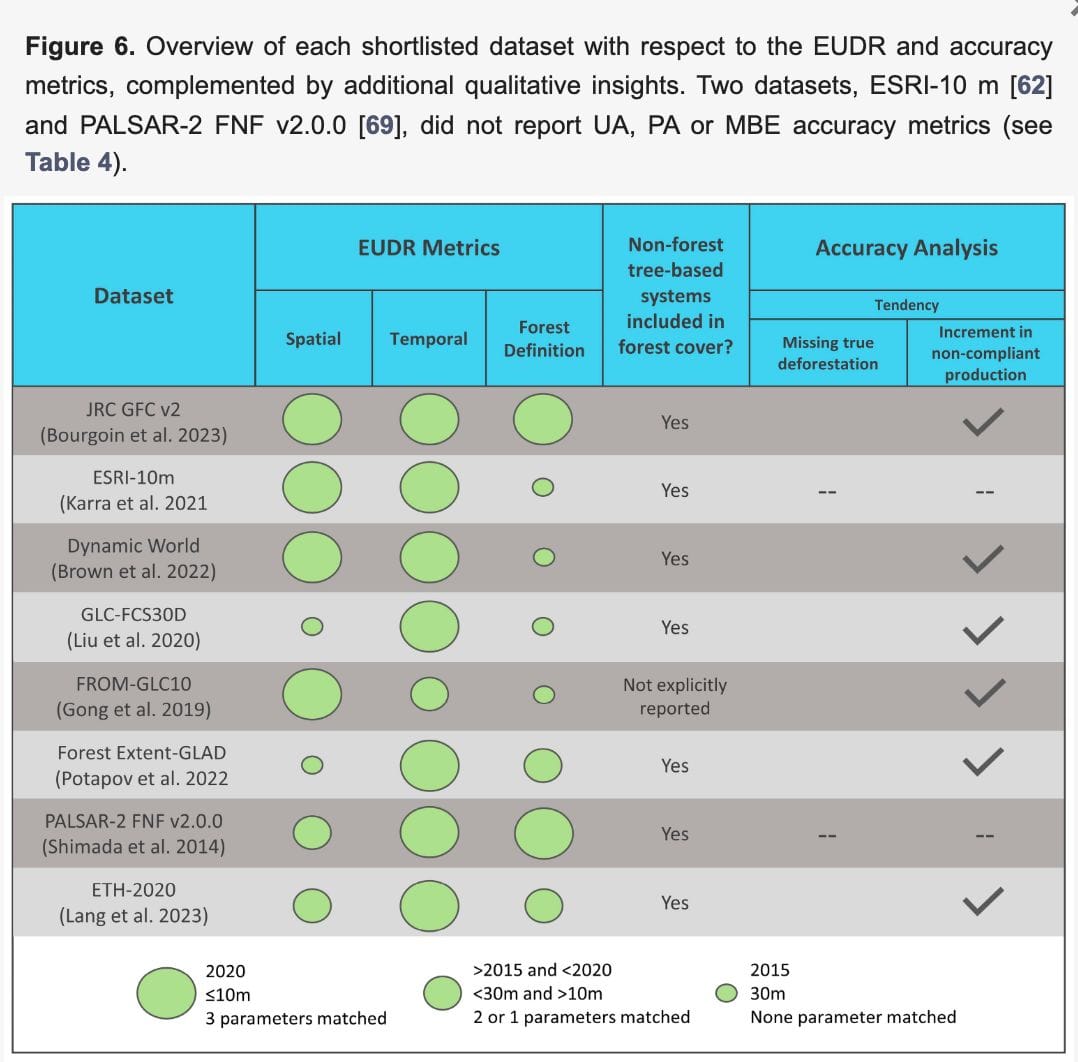
Brazil’s Amazon States Get a Carbon Market Upgrade
Two states in the Brazilian Amazon—Acre and Rondônia—are getting a serious playbook refresh. In a new collab led by VCMI and the Amazon Investor Coalition, these states will soon have a Best Practices Guide to help developers build high-integrity nature-based carbon projects. With partners like Climate Focus, LACLIMA, and the GCF Task Force, the guide drops ahead of COP30 and promises real talk on FPIC, land tenure, legal hurdles, benefit-sharing, and REDD+ alignment. TL;DR: it’s about doing carbon projects right—for communities, investors, and the climate.
💬 Everyone’s talking about “high integrity”—but will this guide finally define how to get there, or just add to the buzzword bingo?
👉👉 Full press release via VCMI
ForestScan: A New Benchmark for Forest Biomass Mapping?
A preprint now under review at Earth System Science Data introduces ForestScan, a first-of-its-kind dataset blending terrestrial, UAV, and airborne LiDAR with forest census data from French Guiana, Gabon, and Malaysia. It’s a meticulous, multi-continent effort to ground-truth biomass estimates and standardize data collection for satellite calibration—dense with detail, but designed with practical use in mind. ForestScan doesn’t just map forests; it maps out what future forest monitoring could look like if precision, transparency, and cross-continental collaboration took the lead.
💬 Will ForestScan set a new gold standard for calibrating satellite-based biomass estimates—or reveal how tricky true ground validation can be?
👉👉 Read the preprint here
Seagrasses Drive Surprising Blue Carbon Gains in the Maldives
A new study in Frontiers in Marine Science spotlights the Maldives’ hidden blue carbon potential—and it’s the seagrasses doing most of the heavy lifting. Across three islands, these coastal meadows were found to contribute over half of the organic carbon stored in sediments, outpacing mangroves. Even some lesser-known coastal vegetation quietly played a role in boosting sediment carbon. With blue carbon stocks above global and regional averages, this early snapshot suggests the Maldives could be a powerful player in ocean-based climate solutions—if backed by targeted conservation and restoration efforts.
💬 Could transparent, ecosystem-specific blue carbon mapping unlock new climate finance pathways for island nations?
👉👉 Read it in Frontiers in Marine Science
How Do Species Rebounds Shape Biodiversity?
A new study in Nature Ecology & Evolution offers a fresh look at an often-overlooked dynamic: the comeback. Analyzing over 300 instances of species increases across the globe, the authors show that biodiversity change is not only about loss—it's also about recovery. These rebounds, however, are highly uneven across taxa and regions, with vertebrates dominating the gains and tropical areas notably underrepresented. The work calls for better recognition of positive trends in conservation discourse—without downplaying the persistent risks of extinction and ecological degradation.
💬 Can focusing on species recoveries change how we frame—and fund—conservation efforts?
👉👉 Read the open-access study here
Global Biodiversity May Be Declining—But Biomass? That’s Another Story
A sweeping new study in Nature Ecology & Evolution tracks population trends for nearly 10,000 species across the globe and makes a provocative claim: while biodiversity is declining, global biomass—the total weight of life—may actually be increasing. The analysis finds that biomass gains in a few large, often generalist species are outpacing the losses from smaller or rarer ones. This pattern, the authors argue, has big implications for how we monitor ecosystem health and set conservation goals.
💬 If total biomass is rising even as species vanish, what kind of ecological picture are we painting—and what might it leave out?
👉👉 Read it in Nature Ecology & Evolution

Edited by Chris Harris

This work is licensed under a
Creative Commons Attribution 4.0 International License.


